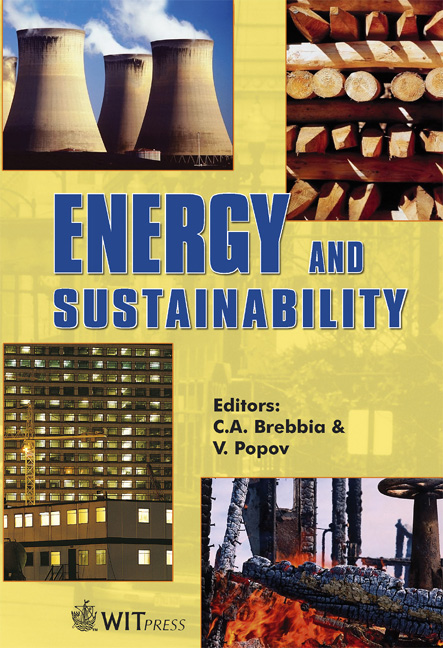Comparing Renewable Energies: Estimating Area Requirement For Biodiesel And Photovoltaic Solar Energy
Price
Free (open access)
Transaction
Volume
105
Pages
10
Published
2007
Size
384 kb
Paper DOI
10.2495/ESUS070191
Copyright
WIT Press
Author(s)
M. Bravi, F. Coppola, F. Ciampalini & F. M. Pulselli
Abstract
This paper describes two kinds of renewable energy: photovoltaic (PV) solar energy installations connected to the Italian electrical grid system, and pure biodiesel (BD100) production by using sunflower oil. A comparison between them is proposed on the basis of: (A) greenhouse gas emissions (GHG) and (B) land requirement. Point (A) is related to the emissions from carbon dioxide (CO2), methane (CH4), nitrous oxide (N2O) deriving from energy production and use, which are calculated in terms of CO2 equivalent by their global warming potentials (GWP); point (B) is related to the area (hectares of biomass plantations and m2 of photovoltaic panels) necessary for energy production. The results will be compared to those resulting from the use of fossil fuels. Keywords: biodiesel, sunflower, photovoltaic, GHG, CO2 equivalent, land requirements, power generation systems. 1 Introduction Energy from biomass and photovoltaic (PV) energy systems are two renewable methods to reduce GHG emission, and can contribute to sustainable development. Today about 2.54 x 1013 kg of CO2 are added to the atmosphere annually [1] because 3 x 1020 joules per year of energy depends on coal, oil and natural gas [2]. Incoming solar radiation (5.6 x 1024 joules) is far larger than the total demand of energy; from this point of view renewable energies like PVsystem and biomass plantations represent the way to intercept more incoming solar energy. There are two very important limits to the amount of energy that can be obtained from these sources. One is the technological limit due to the
Keywords
biodiesel, sunflower, photovoltaic, GHG, CO2 equivalent, land requirements, power generation systems.





